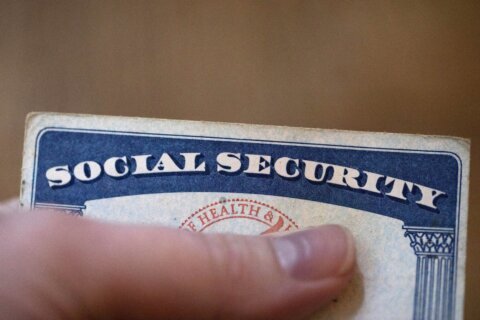Kosta Ligris was training a new associate at the Boston law firm he’d founded when he was suddenly hit by a panic attack. “I got lightheaded in the middle of talking to him,” Ligris, 42, says, recalling that the employee he was training “freaked out.”
Fortunately, Ligris, who at the time had already been coping with panic attacks for a few years, knew what was happening and what to do. While the young lawyer stepped away to get him a glass of water, Ligris focused on his breathing to regain a sense of calm, employing a technique he knew from experience to be effective. By the time the associate returned, Ligris says he was feeling much better. When he first began experiencing panic attacks, about eight years ago, Ligris says he was far more worried in the moment about his symptoms. “Once you know what it is, it disarms it,” he says.
A panic attack is “a sudden episode of intense fear that triggers severe physical reactions when there is no real danger or apparent cause,” according to the Mayo Clinic. Panic attacks typically begin suddenly and without warning. “People with panic disorder have sudden and repeated attacks of fear that last for several minutes or longer,” according to the National Institute of Mental Health. While panic attacks aren’t life-threatening, they can be terrifying, says Amy Przeworski, associate professor of psychological sciences and director of the SOAR Institute at Case Western Reserve University in Cleveland. “During a panic attack, a person experiences a sudden rush of anxiety that reaches a peak within minutes,” she says. “A person may experience heart palpitations or a pounding heart, sweating, trembling or shaking, shortness of breath or smothering, feelings of choking, chest pain or discomfort, nausea or abdominal distress, feeling dizzy, unsteady and lightheaded.”
[See: 11 Simple, Proven Ways to Optimize Your Mental Health.]
It’s common for people who experience a panic attack to feel like they’re dying or going crazy, says Dr. Prudence L. Gourguechon, a psychiatrist and psychoanalyst in Chicago who consults with businesses on the psychological aspects of life in the workplace. Some people who experience panic attacks are so worried about their symptoms they end up in hospital emergency rooms, though there’s nothing medically wrong with them. About 2 to 3 percent of Americans — more than 16 million people — experience panic disorder in a given year, according to the Anxiety and Depression Association of America. Panic disorder is twice as common in women as it is in men, according to the ADAA.
Panic episodes that occur while you’re at your job are different from work-related anxiety, Przeworski says. Work-related anxiety is common, and can be triggered by specific worries about such things as a performance review or a work deadline. Many people experience some form of work-related anxiety at some point. An online survey conducted by Ipsos on behalf of One Medical found that 55 percent of Americans said some aspects of their work environment caused them anxiety, stress or sleeplessness.
While suffering a panic attack at work can be terrifying, it can also be manageable, says Dr. Daniel G. Amen, a double-board certified psychiatrist and founder of Amen Clinics, outpatient health care facilities with eight locations nationwide.
Here’s how to cope with a panic attack at work:
— Focus on your breathing.
— Don’t leave your work space.
— Consider getting professional help.
— Write down your thoughts.
— Think about talking to your boss.
[See: 8 Proven Strategies to Stop Overthinking and Ease Anxiety Now.]
1. Focus on your breathing.
Often when people begin to experience anxiety, their breathing becomes shallow, rapid and erratic, Amen says. “Since the brain is the most metabolically active organ in your body, any state that lowers oxygen will trigger more fear and panic,” he says. “By taking slow, deep breaths you’ll boost oxygen to your brain and start to regain control over how you feel.” Learning deep breathing techniques can help you regain your sense of calm when a panic attack strikes. One way to practice deep breathing is by learning how to breathe from your diaphragm — the area of the body that tends to get “clenched” when we’re anxious, he says. Ligris recommends this breathing technique: Breathe in for four seconds, hold it for seven seconds, then exhale for eight seconds. This can help bring your heart rate down and make your body relax, he says. “It has worked for me every single time I’ve tried it,” Ligris says. You can do breathing exercises while sitting at your desk; for some people, a brief trip to the bathroom or a private office to breathe and calm down can be helpful.
2. Don’t leave your workplace.
Unless your panic attack is coupled with a serious physical condition, like an injury from a fall, don’t leave your workplace, Amen says. “You must face the fear or concern directly, or it will always have control over you and increase your anxiety,” he says. Fleeing your workplace every time you experience a panic attack isn’t a solution and won’t provide long-term relief. You might try reminding yourself that you’ve had panic attacks before and everything turned out OK to remind yourself that you’re not in physical danger. Przeworski, for instance, has clients remain in an anxiety-provoking situation until their anxiety peaks and passes. This approach can help you regain your sense of calm. “We do this repeatedly,” she says. “Each time the person faces (his or her) fear, it takes less time for the anxiety to pass.”
3. Consider getting professional help.
Research suggests that certain parts of the brain, as well as biological processes, are associated with fear and anxiety. Panic disorder sometimes runs in families, though it’s unknown why some family members have it and others don’t, according to the NIMH. Panic disorder is typically treated with psychotherapy, medication or both. “This condition is highly treatable,” Gourguechon says. The NIMH suggests that cognitive behavioral therapy can be particularly helpful in treating panic disorder, because that approach “teaches you different ways of thinking, behaving and reacting to the feelings that come with a panic attack.” Certain prescription medications like antidepressants and beta blockers can also be helpful in treating panic disorder. These medications may cause side effects, like headaches, sleep disruption or nausea, which you should discuss with your doctor.
4. Write down your thoughts.
Often in panicked situations, our thoughts are distorted and need to be challenged, Amen says. “Pay attention to automatic negative thoughts in your mind and write them down to see if they make sense,” Amen says. “If your thoughts are distorted, talk back to and challenge them by writing down a more realistic version of the same thought.” Keeping a journal is good for your mental health, according to the American Psychiatric Association. Similarly, writing down your thoughts after a panic attack has subsided can help you get a better perspective on the experience, Amen says.
[See: 8 Unexpected Signs You’re Stressed.]
5. Think about talking to your boss.
If you have panic disorder, the prospect of disclosing it to a boss or human resources may be daunting. But you also don’t want your boss “to wonder why on occasion you have to drop your work tasks to gather yourself,” Gourguechon says. Keep in mind, under the Americans with Disabilities Act, it’s illegal for an employer to discriminate against you simply because you have a mental health condition, according to the U.S. Equal Employment Opportunity Commission. The ADA requires employers to provide a “reasonable accommodation” for people covered by it. “Start by talking with your human resources department,” says Anita Gadhia-Smith, a psychotherapist who treats patients in the District of Columbia and suburban Maryland. “You may be able to adjust your workload to meet your capacity with the help of human resources and your boss.”
More from U.S. News
8 Proven Strategies to Stop Overthinking and Ease Anxiety Now
9 Phobias That Are Surprisingly Common
How to Handle a Panic Attack at Work originally appeared on usnews.com







